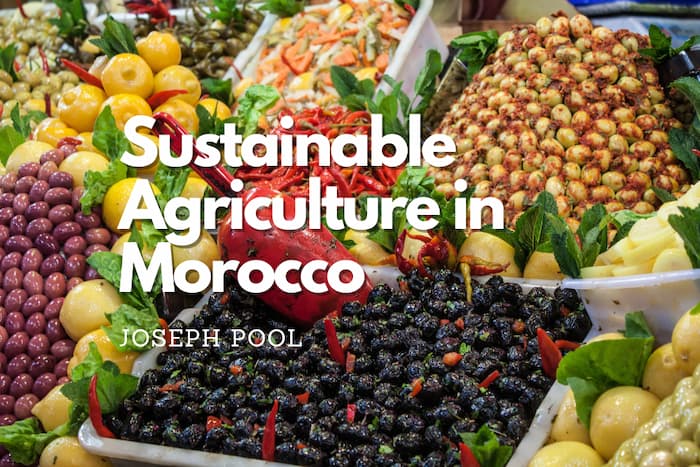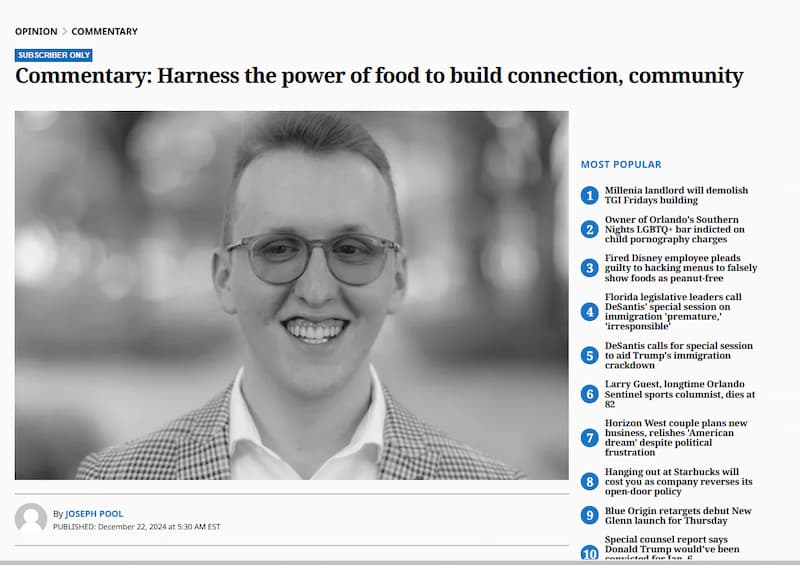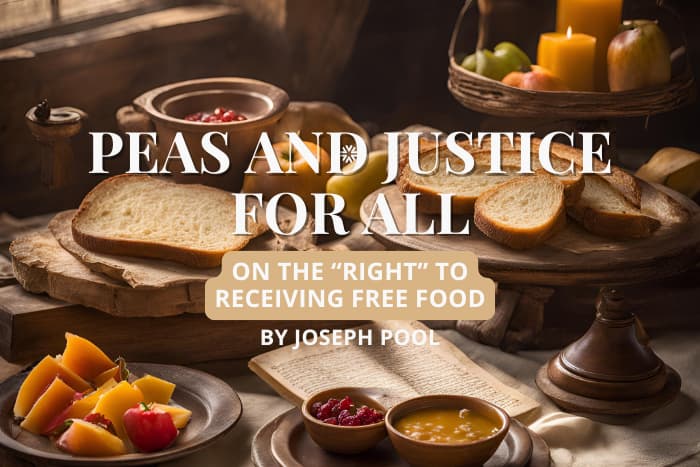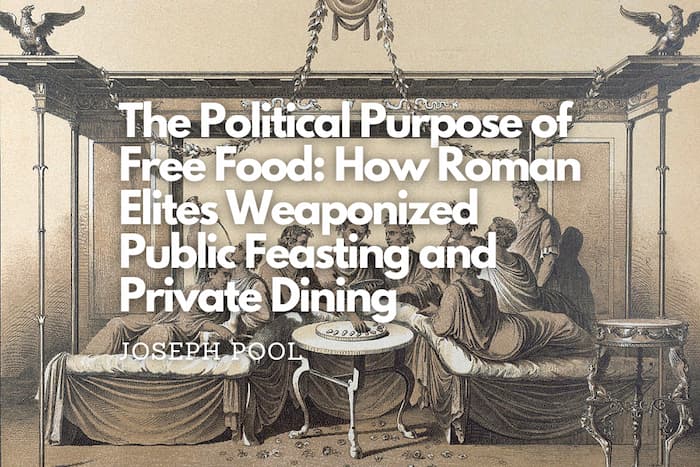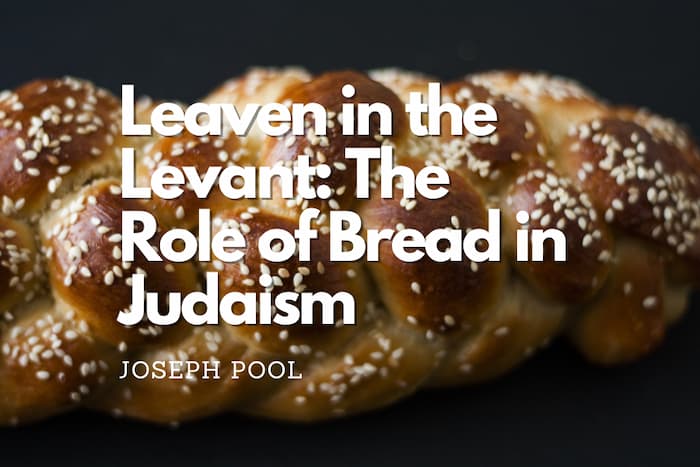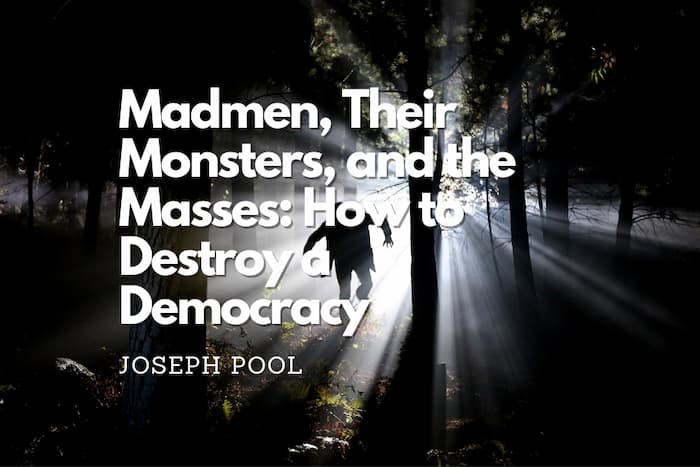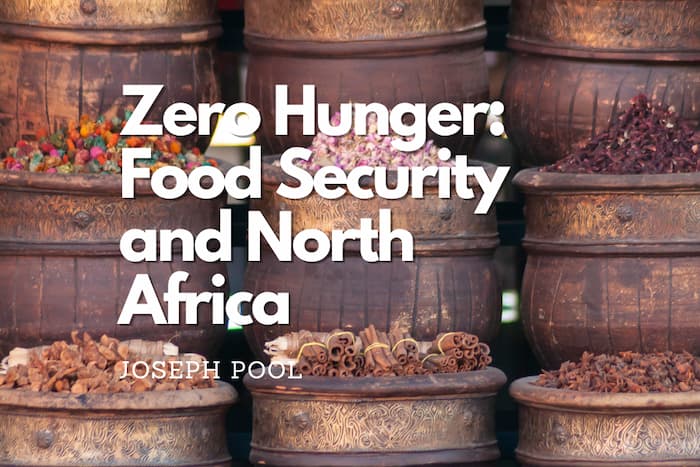Joseph Pool
Introduction
Morocco is a country reliant on its agricultural industry, which alone “accounts for 14 to 20% of the GDP and represents 43% of all employment and 78% of rural employment” (Global Yield Gap Atlas, 2015). The agricultural sector provides more than jobs; it keeps the people of Morocco nourished and alive through the production and distribution of food throughout the country and region. As a result, the lives and livelihoods of Moroccans and others around the world are reliant on the continuity of this industry. The issue is, this field faces unprecedented climate threats that can no longer be addressed using the solutions of old. Moroccan policy makers and members of the public alike must envision and implement creative approaches to survive the coming decades. Morocco needs sustainable, adaptable, and creative approaches to agriculture. Thankfully, international partnerships, government programs, and social enterprises have emerged to keep Morocco fed in increasingly innovative ways. This policy brief will evaluate the efficacy of these initiatives and programs in order to determine the best way for Morocco to use sustainable agriculture to strive towards the United Nations Sustainable Development Goal of Zero Hunger.
Topic Background
Morocco and its agricultural economy are interlinked and inseparable. Alone, it accounts for nearly 80% of rural employment and more than 40% of overall employment in the country. This should be taken lightly. Additionally, the industry provides Morocco with 35% of its exports (Oxford Business Group, 2023), making it crucial for the economic wellbeing and competitiveness of the nation. Moreover, food has historically been part of how Morocco fostered and maintained relations with other nations and between the groups within its borders. But Morocco’s own geography and location creates high volatility in its weather and production, which in turn presents a dire threat to this industry and the nation.
Morocco has a typical Mediterranean climate, noted for mild and rainy winters with arid summers. Under normal circumstances, this climate is ideal for the growth of cereal grains and other nutritious foods, many of which have been grown in the region for centuries and provide many of the inhabitants with their food. However, recent waves of drought and rising temperatures have caused massive crop failures and debilitating inefficiency. This was especially seen in the 2016 drought which USAID explains as, “the worst in 30 years – which reduced cereal yields by 70 percent” (USAID, 2021). This drought greatly affected Morocco’s populace, especially its rural communities which already accounted for roughly 80% of those living in poverty in the nation (World Bank, 2017). With the devastating impact of this drought in mind, and with rising temperatures in the region and globally, USAID and climate analysts have cautioned that Morocco, alongside its neighbors, will become increasingly susceptible to droughts, water shortages, and will face devastating economic impacts if solutions are not found.
Exacerbated by the threat of prolonged drought and an increased frequency in crop failures, conditions continue to deteriorate, farmers continue to lack emergency provisions, and the outlook for Morocco’s food supply and food industry continues down a worrying trajectory. This has been felt with real world ramifications; agricultural output has decreased and the percentage of the population facing food insecurity has increased at a growing, worrying rate. This can be seen in the chart below.
Table 1. Percentage of Morocco’s Population Facing Moderate to Severe Food Insecurity.
YEAR | 2017 | 2018 | 2019 | 2020 |
|---|---|---|---|---|
PERCENTAGE | 26.1% | 26.7% | 28.0% | 31.6% |
As the data suggests, this rise of food insecurity is not slowing down or reversing its course. In fact, both moderate and severe food insecurity are the reality for a growing number of Morocco’s growing population. If current practices continue, more and more people will go hungry year after year, and Morocco’s largest and arguably most important industry as well as the millions who rely on it will enter an unparalleled crisis. Without changes to policies and without the innovations brought about by individuals and international entities alike, the future of food in Morocco may be a bleak one.
This prognosis would spell definitive doom for Morocco, except for one detail. Morocco has expanded its use of sustainable agriculture practices as an attempt to stave off food insecurity and allow for more robust offerings that can resist droughts and disasters. While many of these practices center on creative ways to provide sustainable nourishment to people, such as social enterprise Dar Si Hmad’s use of fog catching devices to turn rolling, mountainous fog into potable drink water (Dar Si Hmad, 2023), other investments have focused on the crops themselves and finding ways to benefit the farmers, their communities, and the planet in the process. While many of these programs and initiatives are still in their infancy, the death blow dealt to the industry may not prove to be as irreversible and permanent as expected.
In response to the 2016 drought and the increasing risk facing the industry, there has been an outpouring of support both from Moroccan programs and partnerships as well as the international community who value the wellbeing of Moroccans and acknowledge their economic and sociopolitical importance. While fighting climate change and food insecurity remain daunting challenges, there is a growing possibility of progress aided by the public and private sectors alike. Solutions have emerged with the promise of being able to save Morocco’s agriculture industry and the millions of families who rely on it to survive and thrive. For this to occur, however, sustainable agriculture must be explored. To prepare for the future, it is imperative to look at some of the current programs and initiatives leading the charge against hunger, and analyze their uses of sustainable agriculture as solutions to the coming crisis.
Programs and Initiatives
High Atlas Foundation: House of Life Project (est. 2012)
One group attempting to address the growing problem of agriculture in Morocco is the High Atlas Foundation, a non-profit social enterprise which has found partners in the Moroccan government, the public sector, and the private sector. As noted on their website, “The High Atlas Foundation plants and monitors trees for carbon offset units as a financial catalyst for water infrastructure, women’s cooperatives, education, and other community-designed initiatives to ensure long-term well-being. HAF also implements programs with partners in the areas of intercultural dialogue and preservation, family literacy, and youth development” (High Atlas Foundation, 2023). While they operate a litany of programs, their flagship program is their “House of Life Project” which, “facilitates the free loan of land adjoining Jewish burial sites in order to establish organic fruit tree and medicinal plant nurseries for the benefit of Muslim farming communities” (High Atlas Foundation, 2023).
The program currently supports 15 of these nurseries around Jewish burial sites as well as schools and municipal buildings. (High Atlas Foundation, 2023). By working with community partners and borrowing their land, HAF is able to keep their costs down and use their revenue in more beneficial ways that more directly provide a sustainable food source to communities in need. Moreover, they have been recognized for their use of trees to “help stabilize eroding areas, provide shade, improve soils, store carbon” (High Atlas Foundation, 2023). The modern technique of capturing carbon and investing their carbon offset credits has allowed for even greater profitability and thus, more work done towards improving the soil and food supply.
Through their House of Life, HAF has expanded their already-successful operations in the region and has become recognized as a leading nonprofit both in terms of efficiency and impact. As a result of their work and expertise, they have been granted Special Consultative Status in the United Nations. Of note in their achievement, they were crowned the “2013 SEED Africa Award Winner” (SEED, 2013) for their role in working with Moroccan farmers to turn organic almonds and walnuts into profitable exports which were reinvested into the community. To date, their success has resulted in the planting of “150,000 almond, fig, pomegranate, and lemon seeds in the nursery, which have reached maturity and are maintained by a network of over 1,000 farmers and 130 local schools” (High Atlas Foundation, 2023). This program flourishes because of its creative full-circle use of trees for aiding in sustainable agriculture, fruits for feeding people, and selling excess for profit in order to reinvest. While it seems very successful, the caution it takes in opening new nurseries prevents it from having a wider area of impact in Morocco. This slow expansion of the program and reliance on both donors and the desire for its products continues to handicap its scope and ability to create lasting change.
Morocco’s Ministry of Agriculture: Green Morocco Plan (est. 2008)
Another group seeking to solve food and climate issues through sustainable agriculture is Morocco’s own Ministry of Agriculture through their Green Morocco Plan. As explained on the Ministry’s site, “[the Green Morocco Plan aims] to fully exploit the agricultural potential of the country and aspires to double the Distribution of Gross Domestic Product (GDP), and create 1,5 million additional jobs, fight against poverty and improve the agricultural income from 2 to 3 times in favour of 3 million rural population as well as to increase the value of exports from 8 to 44 billion dirhams for the sectors where Morocco is competitive” (Agence Pour Le Développement Agricole, 2008). By attracting investors and companies to collaborate, this comprehensive, ambitious program sets out to make agricultural development sustainable and profitable across the country. As such, this program is precariously balanced on the extent to which Morocco can entice investors into supporting the different innovations taking place.
This program works by attracting private sector partners and donors and using the nation’s funds to invest in them and support them with agricultural innovation and expansion. By focusing on sustainable, social agriculture, the Ministry also garners public support. By opening up the program to the public and setting short and long term investment and output goals, the Green Morocco Plan is supportive of various agricultural initiatives. One such part of the Plan seeks to “increase vegetable and animal production in less favored areas” (Agence Pour Le Développement Agricole, 2008) in order to provide revenue and incentivization for farmers and agricultural sector workers to continue production, benefitting their local area and the nation.
Due to its multifaceted approach, the Ministry’s Green Morocco Plan has played a pivotal role in staving off the decline of the agricultural sector by investing in and promoting sustainable agricultural practices. For the people, the Green Morocco Plan has already created hundreds of thousands of new jobs, leading to an increase in innovation and crop diversification, (Agence Pour Le Développement Agricole, 2023). As it relates to sustainable agriculture itself many new trees have been planted, hydro-agricultural equipment has been deployed, and land has been turned farmable and traversable. In terms of the sustainable use of water, “the area equipped with drip irrigation systems has expanded significantly to reach 542,000 hectares against 128,000 hectares only in 2008” (Agence Pour Le Développement Agricole, 2023). These increases in drip irrigation, tree planting, and farmable land mark tremendous strides being taken at the national level through a combination of policy implementation, private investment, and collaborative effort. This program continues on and the Ministry has made clear its intent for these achievements to only increase with more partnerships and more funding. The Green Morocco Plan has managed to galvanize public opinion and Moroccan industry towards the common goal of improving the agricultural sector through sustainable innovations and investments. However, its reliance on donations and voluntary commitments of partners potentially renders it unable to guarantee certain amounts of funding in a specific time frame.
EU-Morocco: Terra Verte Partnership (est. 2022)
Recently, Morocco and the European Commission—the executive, governing body of the European Union—announced a joint partnership to pursue sustainable agriculture: the Terra Verte Partnership. As explained by the Commission’s announcement, “The programme has three specific objectives: support for sustainable agricultural value chains, protection and management of forestry, and job creation and social inclusion across the two sectors. The programme will intervene in the four pilot regions of Tetouan – Tangier – Al Hoceima, Beni Mellal – Khenifra, Draa-Tafilalet and L’Oriental” (EU Commission, 2022). By bolstering and funding Moroccan initiatives that better align with the Sustainable Development Goals, this international partnership presents a major opportunity for Morocco, not just to improve its sustainable agriculture but to improve its economic relationship and relevance to nations who might be more interested in its exports in the coming years. However, Morocco becoming reliant on EU support may worry some concerned parties that Morocco would become a political vassal to the Commission’s plans and policies, unable to reject them for fear of losing these investments.
As noted by the Commission, “The EU-Morocco Green Partnership is the first such EU initiative with a partner country” (European Commission, 2022). By investing €115 million into Morocco’s agricultural industry, “It aims to advance the external dimension of the European Green Deal through action on the ground and is expected to become a model for similar partnerships with other countries, including on the African continent, where Morocco already leads in terms of environmental and climate ambitions” (European Commission, 2022). This money has been earmarked for use in improving Morocco’s industries into more green ones. EU Neighbours explains, “the programme will support research and development, training and support/mentoring for sustainable, resilient and inclusive management of agricultural and forest ecosystems in the Kingdom. In addition to this, Morocco and the EU will shortly sign new cooperation initiatives in the fields of green energy, the circular economy and the decarbonation of industry” (EU Neighbours, 2023).
The full social and environmental impact of Terra Verte might yet be a few years away. However, the money invested has already resulted in the emergence of new programs and improvements to old ones. The money has gone towards“priority response measures to optimise national agricultural production as well as support for producers for the development of more sustainable agricultural practices” (EU Commission, 2023). In short, the Commission has authorized funds for investments in production technology—better equipping these farms with drought tolerance and crop management systems. In tandem with the Green Morocco Program, the Commission’s partnership ensures that money is freed up for investment in agricultural capital which in turn allows for more produce to be sold to Europe. This program will remain one worth watching as these investments metaphorically and literally blossom across Morocco. The Terra Verte Partnership provides great opportunities and potential gains for Morocco and the EU. In doing so, it assures its continued existence and success, benefiting both groups. The potential downside of this approach would be if funds are mismanaged or the partnership falls through for political or social reasons. Similarly to the Green Morocco Plan, it relies on the good faith and meaningful participation of its signatories. If investors and shareholders do not share the passion of agricultural workers and innovators, these programs would collapse and Morocco would be back to where it was in terms of preparedness for future crises.
Recommendations
The House of Life Program, Green Morocco Plan, and Terra Verte Program have been mostly successful so far in combating hunger through sustainable agriculture. However, there may still be room for improvement and innovation within and between these three groups. By taking inspiration from one another’s practices, Morocco as a whole can benefit to an even greater extent without waiting on entirely new initiatives to emerge.
All three programs in some way deal with fruit and nut trees. If High Atlas Foundation operates and owns the nurseries, they can use their connections to help get land for Morocco’s Agriculture Ministry which can be a testing ground for Terra Verte-inspired green farming. The European Commission’s immediate connection to the vast European market can benefit the Tree of Life by helping with purchasing exports and the Green Morocco Plan by bringing in more partners to invest in its initiatives. As a final example of how collaboration can benefit these programs, the Green Morocco Program can spotlight different partners and programs such as Terra Verte and House of Life as a way of incentivizing their participation. While these programs are successful on their own, they can all borrow from one another’s innovative approaches.
Another possibility not addressed by these programs is the introduction of different crops and techniques into the region. Sometimes, it may prove more beneficial to look towards new systems and ideas than to continue funding stopgap measures. This can be as simple as attempting to use more aeroponics or hydroponics to increase crop yield in a more climate-controlled environment. Additionally, the introduction of drought-resistant staple foods such as quinoa could be investigated as foods to look towards. While preliminary evidence suggests these strategies may work, more research would be needed to determine their efficacy.
Conclusion
Currently, Morocco is heating up and its crops are dying out. The good news, however, is that progress is being made on reversing this agricultural disaster. Moreover, the use of sustainable agriculture has been key to the continued fight against hunger. As seen from the High Atlas Foundation’s House of Life, the Agence Pour Le Développement Agricole’s Green Morocco Plan, and the European Commission’s EU-Morocco Terra Verte Program, a combination of social enterprise, national movement, and international investments have proven to be a possible panacea against an otherwise alarming threat to millions of Moroccan lives. It will be important to watch these initiatives and others in the coming decades to determine if they can keep up with growing demand and with increasing risks from the climate.
References
Agence Le Pour Developpment Ageicule. (2018). Main achievements of the green Morocco plan. Morocco Ministry of Agriculture. https://www.ada.gov.ma/en/main-achievements-green-morocco-plan
Dar Si Hmad. (2023). Fog harvesting in rural southwest Morocco. Foundation Dar Si Hmad. https://darsihmad.org/
European Commission. (2022). EU-Morocco Green Partnership: Commission adopts a key programme to support the agricultural and forestry sectors in Morocco. European Neighbourhood Policy and Enlargement Negotiations. https://neighbourhood-enlargement.ec.europa.eu/news/eu-morocco-green-partnership-commission-adopts-key-programme-support-agricultural-and-forestry-2022-10-25_en
EU Neighbours. (2023). Green Partnership: European Commission delegation visits Morocco. https://south.euneighbours.eu/news/green-partnership-european-union-delegation-visits-morocco/
Food and Agricultural Organization of the United Nations Food. (2020). FAO country profiles: Morocco. UN FAO. https://www.fao.org/countryprofiles/index/en/%3Fiso3%3Dmar
Global Yield Gap Atlas. (2015). Morocco. Global Yield Gap Atlas. https://www.yieldgap.org/Morocco
High Atlas Foundation. (2023). HAF Tree Planting. High Atlas Foundation. https://www.highatlasfoundation.org/tree-planting
SEED. (2013). 2013 SEED Africa Award Winner: High Atlas Foundation. SEED. https://seed.uno/enterprise-profiles/high-atlas-foundation
United States Agency for International Development. Climate change risk profile: Morocco. USAID. https://pdf.usaid.gov/pdf_docs/pa00mtzd.pdf
World Bank Group. (2018). Poverty in Morocco: Challenges and opportunities. World Bank. https://www.worldbank.org/en/country/morocco/publication/poverty-in-morocco-challenges-and-opportunities
